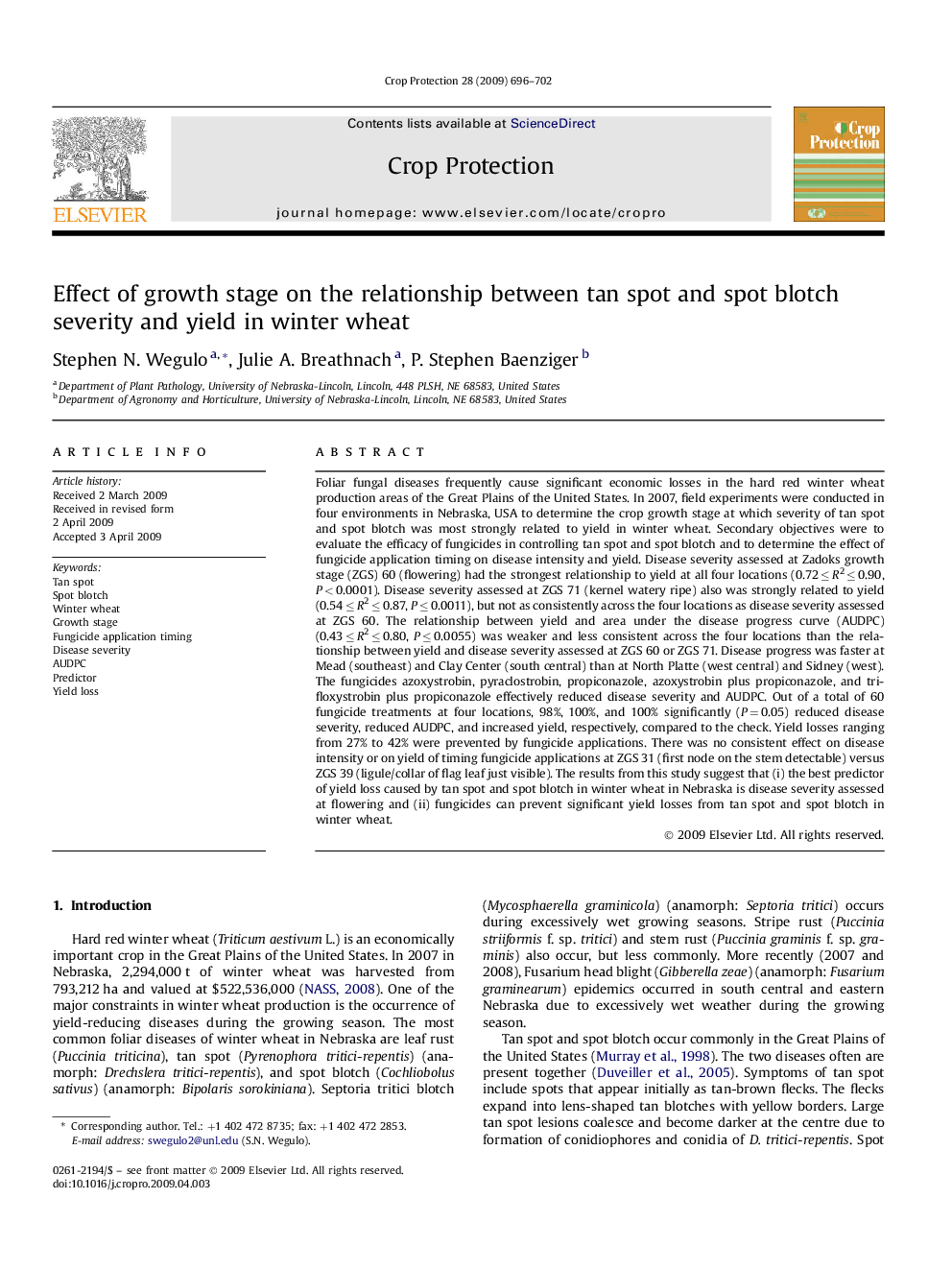| کد مقاله | کد نشریه | سال انتشار | مقاله انگلیسی | نسخه تمام متن |
|---|---|---|---|---|
| 4507416 | 1321354 | 2009 | 7 صفحه PDF | دانلود رایگان |

Foliar fungal diseases frequently cause significant economic losses in the hard red winter wheat production areas of the Great Plains of the United States. In 2007, field experiments were conducted in four environments in Nebraska, USA to determine the crop growth stage at which severity of tan spot and spot blotch was most strongly related to yield in winter wheat. Secondary objectives were to evaluate the efficacy of fungicides in controlling tan spot and spot blotch and to determine the effect of fungicide application timing on disease intensity and yield. Disease severity assessed at Zadoks growth stage (ZGS) 60 (flowering) had the strongest relationship to yield at all four locations (0.72 ≤ R2 ≤ 0.90, P < 0.0001). Disease severity assessed at ZGS 71 (kernel watery ripe) also was strongly related to yield (0.54 ≤ R2 ≤ 0.87, P ≤ 0.0011), but not as consistently across the four locations as disease severity assessed at ZGS 60. The relationship between yield and area under the disease progress curve (AUDPC) (0.43 ≤ R2 ≤ 0.80, P ≤ 0.0055) was weaker and less consistent across the four locations than the relationship between yield and disease severity assessed at ZGS 60 or ZGS 71. Disease progress was faster at Mead (southeast) and Clay Center (south central) than at North Platte (west central) and Sidney (west). The fungicides azoxystrobin, pyraclostrobin, propiconazole, azoxystrobin plus propiconazole, and trifloxystrobin plus propiconazole effectively reduced disease severity and AUDPC. Out of a total of 60 fungicide treatments at four locations, 98%, 100%, and 100% significantly (P = 0.05) reduced disease severity, reduced AUDPC, and increased yield, respectively, compared to the check. Yield losses ranging from 27% to 42% were prevented by fungicide applications. There was no consistent effect on disease intensity or on yield of timing fungicide applications at ZGS 31 (first node on the stem detectable) versus ZGS 39 (ligule/collar of flag leaf just visible). The results from this study suggest that (i) the best predictor of yield loss caused by tan spot and spot blotch in winter wheat in Nebraska is disease severity assessed at flowering and (ii) fungicides can prevent significant yield losses from tan spot and spot blotch in winter wheat.
Journal: Crop Protection - Volume 28, Issue 8, August 2009, Pages 696–702